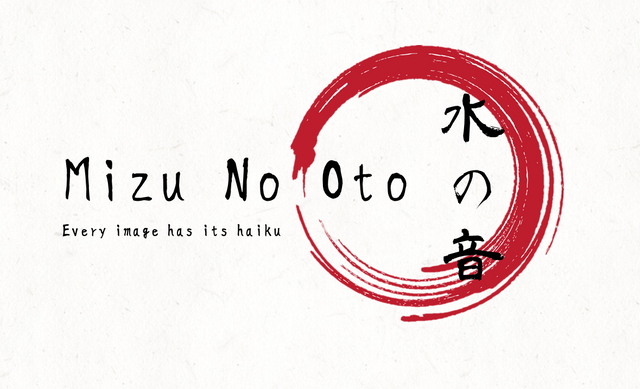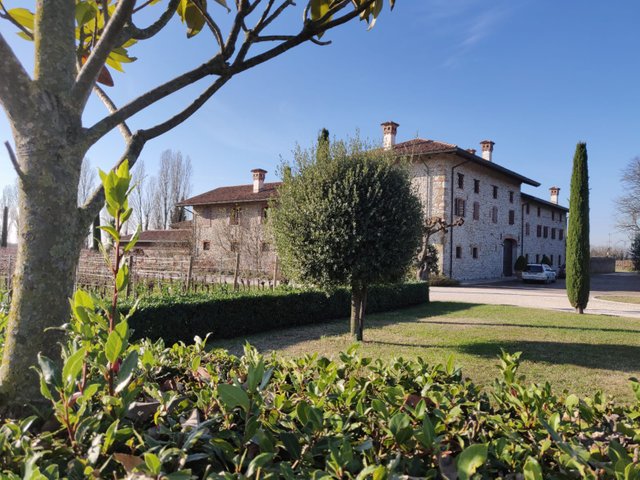Mizu No Oto- Every Image Has Its Haiku - Edition #43 (English)

haiku by Elancharan Gunasekaran (Singapore)
Mizu No Oto December English edition is introduced by this gendai (modern) haiku by Elancharan Gunasekaran, a multidisciplinary artist and poet, creator of House Haiku, an experimental music series combining poetry and house music elements. You can read many of his haikus on his Twitter: https://twitter.com/elancharang
Here is how this contest works:
A photo is posted.
You write a haiku inspired by that photo with your own post (use #haikucontest as your first tag) or a comment in the comment section.
You can read other’s haiku and vote for one of them, answering to the special Bananafish comment in the comment section.
The authors of the Best Haiku, Popular Choice, and Best Vote Comment WIN 1 SBI each!
The contest deadline for both posting haiku and voting is the payout of this post (7 days from the publication). There will be another post with the winners proclamation after 1-2 days from the deadline.

The Prizes:

The requirements:
• The haiku should be related to the prompt image.
• A haiku has no title.
• The haiku should be in English, or include an English translation.
• The English haiku form is: a short (3-4 syllable) verse, a longer (5-6 syllable) verse, another short (3-4 syllable) verse.
• There should be the kireji (切れ字), a cut between the 1st and the 2nd verses, or between the 2nd and the 3rd; the cut can be grammatical, as a sign of punctuation, or it can be a cut in the meaning, like two different images.
• The time window to post your haiku and cast your votes is up to the payout of this post.

Prompt Image:

[photo by @f3nix]

Do you want to know how we evaluate the submitted haiku? These are the characteristics we search for:
• Kigo (季語), an explicit or implicit reference to a season, that defines the time of the year in which the haiku is composed or referred to.
• Sabi (寂), the sense of the inexorable passage of time, the beauty or serenity that accompanies the advance of age, when the life of the objects and its impermanence are highlighted by patina and wear or by any visible repairs.
• Wabi (侘寂), the taste for frugal and natural things, rustic simplicity, freshness or silence; it can be applied to both natural and artificial objects, or even non-ostentatious elegance.
• Mono no aware (物の哀れ), empathy with nature and human life; the "feeling of things", nostalgia, regret for the passing of time, understanding of the changeability and of the transience without suffering.
• Yūgen (幽玄), sense of wonder and mystery; it represents the state of mind produced by the inexplicable fascination of things, the feeling of an 'other' universe, full of mysterious unity.
• Karumi (軽み), beauty in simplicity; poetic beauty reflected in its simplicity, free from preconceptions and moral judgment.
• Shiori (しおり), gentleness; the levity and the delicate charm that radiates from the verses, where things are evoked in the reader without aggressiveness or excessive explicitness.

The two composition techniques
In this edition, I would like to talk about the two stylistic composition techniques of haiku and their combinations. After so much time talking about aesthetics and philosophy, let's return to considering the pragmatic and “artisanal” aspect of how a haiku is made.
A widespread mistake made by the neophytes who engage with haiku is to think that each line or verse corresponds to an image, according to the following model:
First line = introductory image
Second line = second image in harmony or contrast
Third line = third image in harmony or in contrast
Example:
setting sun
the shadows lengthen
hearths light up
This model does not belong to the traditional stylistic canons and is not effective, because it can generate a confusion of images that leads away from the aesthetic principles of haiku.
Another widespread mistake is to consider haiku as a kind of riddle in which the first two lines present two images that are then "summarized" in the third verse, as if this were the explanation of the first two:
First line = introductory image
Second line = second image in harmony or contrast
Third line = summary concept
Example:
evening falls
light through the windows
homesickness
Even this model has nothing to do with the haiku spirit. These compositions are broken into three sections that communicate nothing but a small wit.
Both those short poems may be enjoyable, but none of those is a haiku.
There are only two stylistic models of haiku really existing in the literature. I remember we are talking about traditional haiku. Modern haiku escapes this categorization (but still does not use the two wrong models mentioned above).
A. Toriawase
The most widespread and preferred model by haijin masters, because it’s more versatile and profound, uses the technique called toriawase ("combination").
This technique consists in presenting two apparently distinct and distant elements or concepts, and linking them by juxtaposition with the kireji, creating either a reciprocal reinforcement (torihayasi) or a suggestive contrast (nibutsu shōgeki).
B. Ichibutsu jitate
The second technique consists in presenting only one element (the words mean precisely "one element"), developed in the course of the three verses. No juxtaposition of distinct images is created and, therefore, there is no kireji. In some haiku written according to the ichibutsu jitate technique one can find cut words, but their role is only to create a formal pause or a sense of final suspension.
So, by combining these two editing techniques, five different conformations of a traditional haiku can be identified:
1- ichibutsu jitate
First line: introduction of an image
Second line: development of the same
Third line: conclusion
pear tree shadow
grabbed by the rake
of my neighbour
(Mishiranu)
2- toriawase with nibutsu shōgeki to the third ku
First line: introduction of an image
Second line: development of the same
Third line: second image in contrast
exhausted
looking for an inn -
wisteria flowers
(Matsuo Bashō)
3- toriawase with nibutsu shōgeki to the second ku
First line: introduction of an image
Second line: second image in contrast
Third line: development of the second image
rainy day -
iris flowers go
through the gate
(Itō Shintoku)
4- toriawase with torihayashi to the third ku
First line: introduction of an image
Second line: development of the same
Third line: second image in harmony
tired eyes
contemplating roses -
convalescence
(Masaoka Shiki)
5- toriawase with torihayashi to the second ku
First line: introduction of an image
Second line: second image in harmony
Third line: development of the second image
fresh wind -
shadow of a cloud
on green rice fields
(Morikawa Kyoroku)
I would like you to try and practice following one of these five models in your participation in this edition. Since I keep them in mind, I think my haiku have improved a lot.
Until next time!

Good haiku to everybody, and remember the posting/voting deadline: seven days from this post publication!
Your bananafishous haiku herald


Let’s the Bananafish Tribe grow together!

With delegations, Bananafish VP will grow and consequently the upvotes given to every contest entry will be higher.
Following the voting trail is a way to make sure you always support the other participants to the Bananafish contests, automatically upvoting the posts (but not the comments) Bananafish upvotes.
Join the Bananafish Realms on Discord and chat with us: https://discord.gg/ZWmEUWT
If you’re interested, here you can find all the information needed.

[banner credit: @f3nix]
Other Bananafish awesome contests and creative works (click on the banners):




Life growing on the dayside
Shadows to lurk in
Very interesting point of view! Which of the five forms do you think your haiku looks like the most?
Ah the two sides of the building, or the hedge or the tree. After reading this I see all the shadows.
Pleasure to follow the bananafish.
The pleasure is ours 🙂 Sorry for your reputation bud, what happened if I may ask?
I support free speach and redistribute whale rewards. People with large amounts of steem power abuse. I was negative until after the fork.
We stand with you, buddy. You've our full support against the whales' circlejerk.
TYVM. Looks like we recently took number one alliance in @steemnova
Vote for your favorite haiku:
This week my vote is for the @mllg poem. Thank you for keeping this nice contest.
Hi all. I have read all the haiku carefully. @bananafish this time contributed two techniques to build traditional haiku (and I have reviewed that reading several times hahahahaha).
For edition 43 my favorite is @oacevedo because in addition to considering his poem very beautiful, (I think) that he did his perfect exercise, with a Toriawase structure with nibutsu shōgeki to the third ku.
Hi all! :) here my entry:
https://steemit.com/spanish/@salvao/myhaikuformizunooto43englisheditionengesppoem-alpivwtaot
The winter sun
warms the mornings.
Always present.
El sol de invierno
calienta las mañanas.
Siempre presente.
Hello friends, this is my entry:
https://steemit.com/haikucontest/@oacevedo/mizu-no-oto-every-image-has-its-haiku-edition-43-english
in the stately home
green splendor
Greetings haiku lovers.
With joy to be in this new edition of the contest, I leave my exercise and my entry.
the storks will perch.
The property.
Hi! @bananafish. Thanks for a new haikucontest.
Here my entry: https://steemit.com/haikucontest/@mllg/mizu-no-oto-every-image-has-its-haiku-edition-43-english-spanish
My entry:
https://steemit.com/creativecoin/@zeleiracordero/this-is-my-haiku-mizu-no-oto-every-image-has-its-haiku-edition-43
Sunny day-
the light flutters
on the leaves
Día soleado-
la luz aletea
en las hojas
Hi @bananafish, my entry https://steemit.com/haikucontest/@marcybetancourt/mizu-no-oto-every-image-has-its-haiku-edition-43-english
Grandparents' home
dining ten.
The haiku was built in the Toriawase form with torihayashi at the second ku
Hi @bananafish here is my entry:
Grand mansion
imposes its light!
to the meadow.